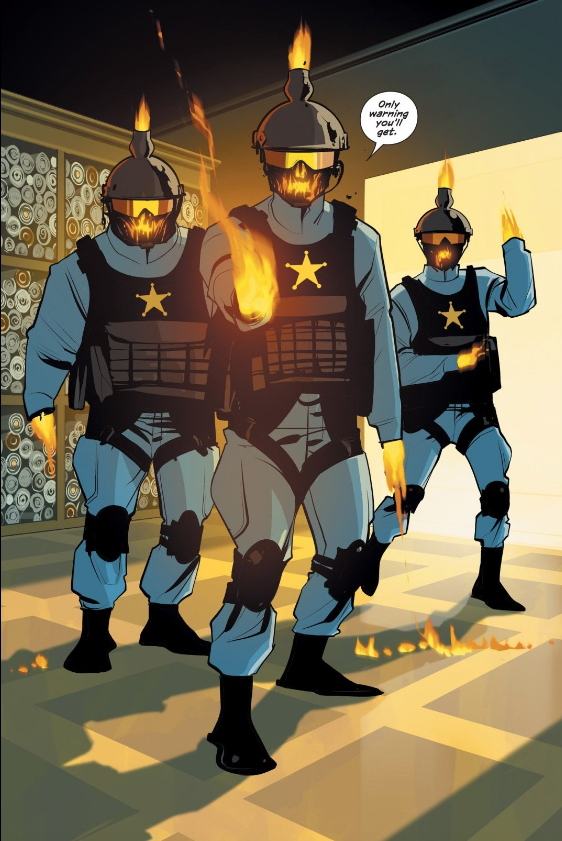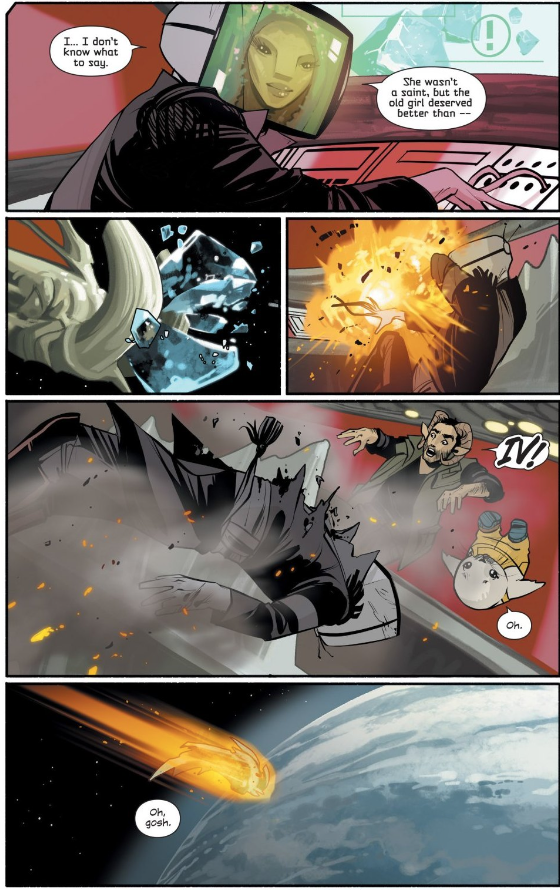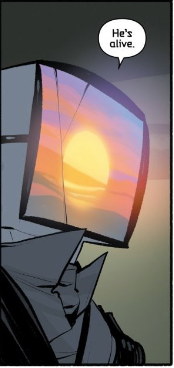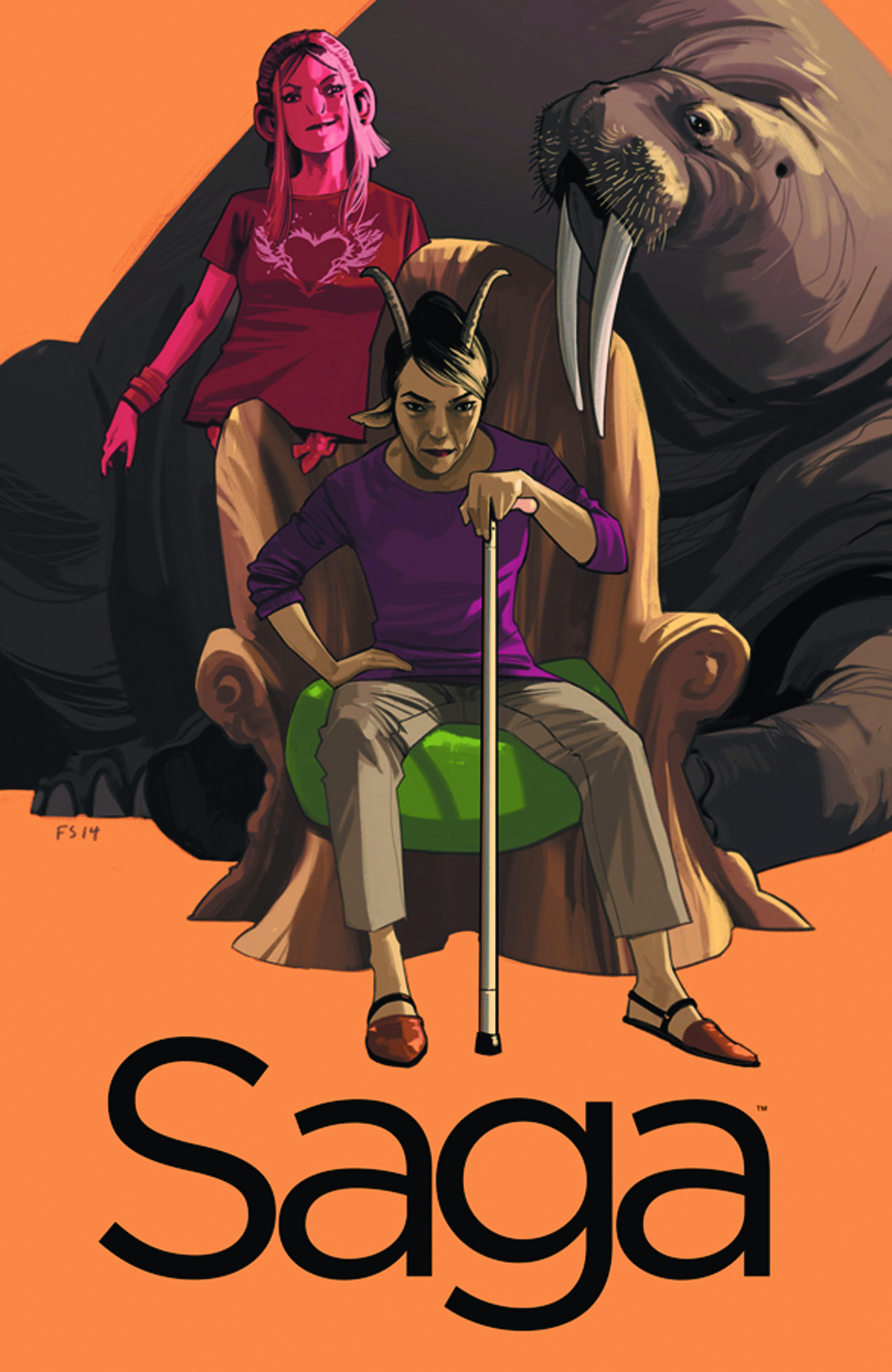By Zack Quaintance — We didn’t really plan the schedule of this Saga Re-Read, just sort of jumping into it soon after Brian K. Vaughan and Fiona Staples announced the book would be going on hiatus for at least a year. As such, the issues fall where they will. This week sees us just days out from Christmas...while reading one of the bleakest thematic issues of Saga yet.
Yes, in Saga #20 we get a story about parents who—for varied reasons—are haggard and discontent, mostly fulfilling their responsibilities but finding themselves desperate for a little self reclamation as they do. This is the first two-thirds of Saga #20. The book ends with a violent punctuation, a reminder that as difficult as circumstances can get, there are extremes in this world and our own troubles often pale in comparison. As a result, Saga #20 feels like one of the most honest issues of the story to date, and while it may be an uncomfortable read, it’s early in this story arc, which essentially promises some relief as it progresses.
Let’s take a closer look!
Saga #20
Here’s the official preview text for Saga #20, which was first released back on June 25, 2014. This is maybe when the series really settled in to its late-month release schedule. Anyway, here’s the bygone solicit text for the book…
Something terrible happens.
Yeah, this sort of cryptic and ominous teaser becomes somewhat standard as the book wears on. The book being a sales hit has probably created the luxury of keeping previews vague, seeing as by this point in the run they knew each issue would move a ton of units, and, more importantly, that the trades would sell like crazy in bookstores and other non-comics venues. Now, onto the terrible something(s).
The Cover: A sweet cover featuring disguised father and rapidly-growing daughter. The gold star balloon, stubby-horned toddler, and bandaged man are all striking visual features, but the real story of this cover is told by the facial expressions. The young girl, Hazel, is just so innocent and happy, while the father is more serious, not dour by any means, but looking equal parts burdened and contented, a man with a great many responsibilities who wouldn’t have it any other way. Saga covers are rarely so sweet...
The First Page: ...and then we arrive on a classic Saga first page, one of the sex ones, as it where, in which Prince Robot IV (who last issue just became a father, albeit while he himself was still missing in action) is in what is pretty evidently a bordello, nude and being entertained by a harem of young ladies from different planets. His cracked screen, a relatively new reality at this point in the story, alludes to Robot IV being unwell. The women, later referred to as sales associates, are doing things to him, and he has one word in exchange: ...more…I’m hard pressed to think of a first page and cover more at odds with each other than these two.
The Surface: This issue—in terms of both surface and subtext—is all about escape. Marko seeks his escape by flirting with a stranger, Alana finds hers in drugs, and concussed Prince Robot IV (who as we noted above may not even realize he’s a new parent) disappears into a brothel planet. Even Ginny, the dance teacher Marko flirts with, notes that she’s essentially escaping into her own work, stashing her kid in daycare four days a week while her husband is out on the road, doing something related to the war (as most characters do). After seeing all the haggard new parents fighting to reclaim parts of themselves, we get a stark and sinister contrast: the robot royal’s goes to murderous extremes, monologuing as he does about how painful it was to lose a child because of his station in life. More on the significance below...
The Subtext: The subtext to the way this issue is structured (the first two acts about escaping new parenthood, the last about the devastation of losing a child to poverty) is a stark reminder that tiring as it may be, being able to even raise a child in health and comfort is an increasingly privileged luxury, one we shouldn’t take for granted. The subtext in this issue is essentially twofold, with another part about the very nature of escapism within a society and, more specifically, whether even well-done art truly has the power to change the world. Vaughan is at his most cynical here (not to sound cliche, but it’s always darkest before a dawn…although I’ve read through Saga #54 and we haven’t exactly gotten that, yet), possibly wondering at the impact of his own work as he notes that even shows that are well done function like drugs, providing a brief entertainment high that changes how people feel without altering their actions once it’s over. If I recall correctly, this will be explored in greater detail in the coming issues.
The Art: Fiona Staples work is as wonderful as always, with a standout sequence being Alana getting high for the first time. I feel like this point in my life as a reader, I’ve seen so many narcotic highs rendered (and well) in comics. Staples goes an almost subtle route, having only two pages to convey what Alana’s feeling but still getting it all across.

























